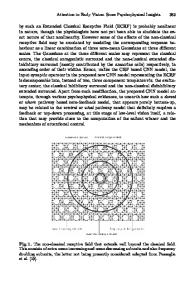Modeling Psychophysical Data in R
Many of the commonly used methods for modeling and fitting psychophysical data are special cases of statistical procedures of great power and generality, notably the Generalized Linear Model (GLM). This book illustrates how to fit data from a variety of p
- PDF / 5,704,505 Bytes
- 376 Pages / 439.36 x 666.15 pts Page_size
- 39 Downloads / 319 Views
For further volumes: http://www.springer.com/series/6991
Kenneth Knoblauch • Laurence T. Maloney
Modeling Psychophysical Data in R
123
Kenneth Knoblauch Department of Integrative Neurosciences Stem-cell and Brain Research Institute INSERM U846 18 avenue du Doyen Lépine Bron, France Series Editors: Robert Gentleman Program in Computational Biology Division of Public Health Sciences Fred Hutchinson Cancer Research Center 1100 Fairview Ave. N, M2-B876 Seattle, Washington 98109-1024 USA
Laurence T. Maloney Department of Psychology Center for Neural Science New York University 6 Washington Place, 2nd Floor New York, USA
Kurt Hornik Department für Statistik und Mathematik Wirtschaftsuniversität Wien Augasse 2-6 A-1090 Wien, Austria
Giovanni G. Parmigiani The Sidney Kimmel Comprehensive Cancer Center at Johns Hopkins University 550 North Broadway Baltimore, MD 21205-2011 USA
ISBN 978-1-4614-4474-9 ISBN 978-1-4614-4475-6 (eBook) DOI 10.1007/978-1-4614-4475-6 Springer New York Heidelberg Dordrecht London Library of Congress Control Number: 2012943991 © Springer Science+Business Media New York 2012 This work is subject to copyright. All rights are reserved by the Publisher, whether the whole or part of the material is concerned, specifically the rights of translation, reprinting, reuse of illustrations, recitation, broadcasting, reproduction on microfilms or in any other physical way, and transmission or information storage and retrieval, electronic adaptation, computer software, or by similar or dissimilar methodology now known or hereafter developed. Exempted from this legal reservation are brief excerpts in connection with reviews or scholarly analysis or material supplied specifically for the purpose of being entered and executed on a computer system, for exclusive use by the purchaser of the work. Duplication of this publication or parts thereof is permitted only under the provisions of the Copyright Law of the Publisher’s location, in its current version, and permission for use must always be obtained from Springer. Permissions for use may be obtained through RightsLink at the Copyright Clearance Center. Violations are liable to prosecution under the respective Copyright Law. The use of general descriptive names, registered names, trademarks, service marks, etc. in this publication does not imply, even in the absence of a specific statement, that such names are exempt from the relevant protective laws and regulations and therefore free for general use. While the advice and information in this book are believed to be true and accurate at the date of publication, neither the authors nor the editors nor the publisher can accept any legal responsibility for any errors or omissions that may be made. The publisher makes no warranty, express or implied, with respect to the material contained herein. Printed on acid-free paper Springer is part of Springer Science+Business Media (www.springer.com)
Preface
This book is about modeling psychophysical data with modern statistical methods using the software language R [
Data Loading...











